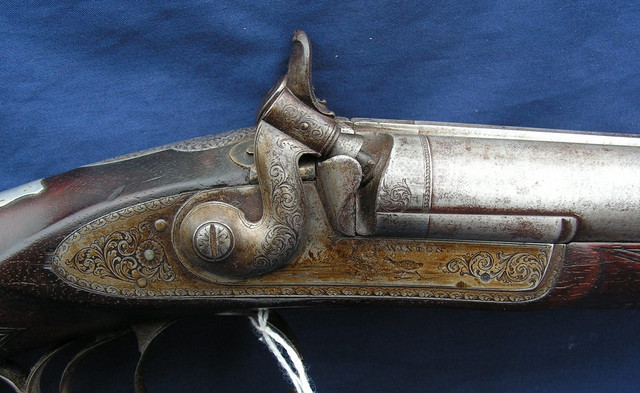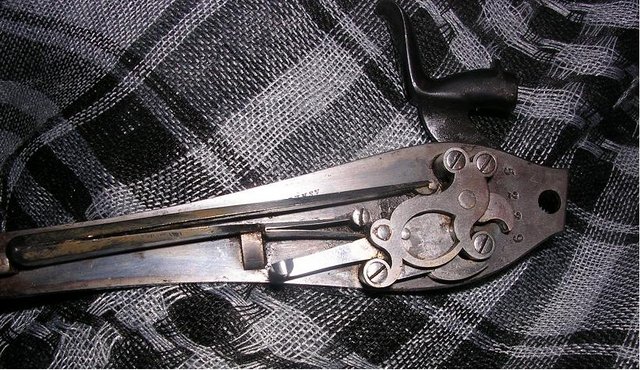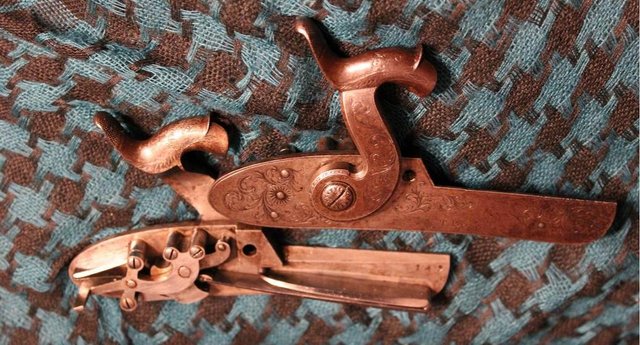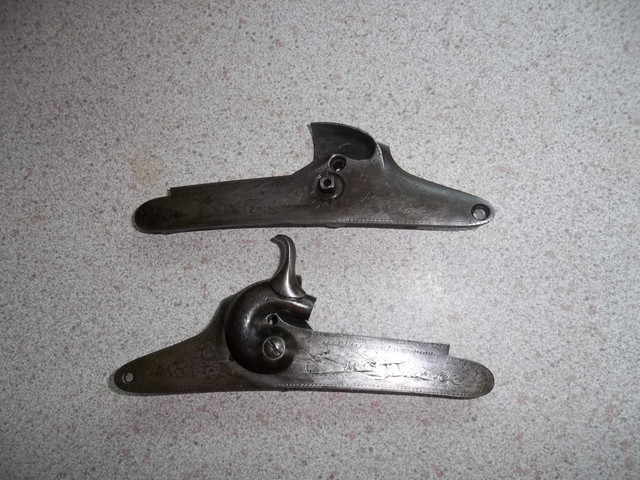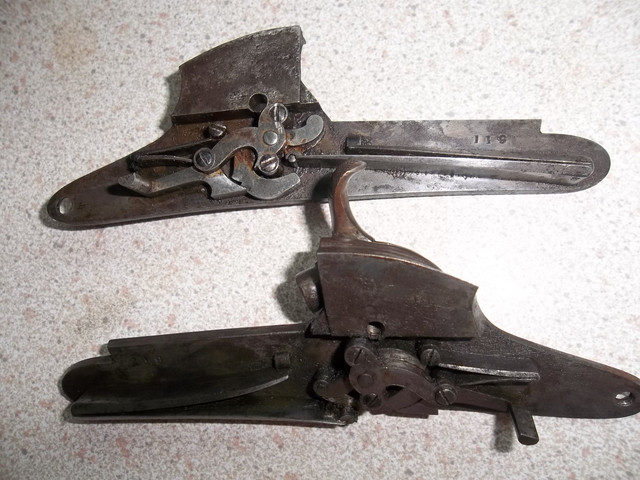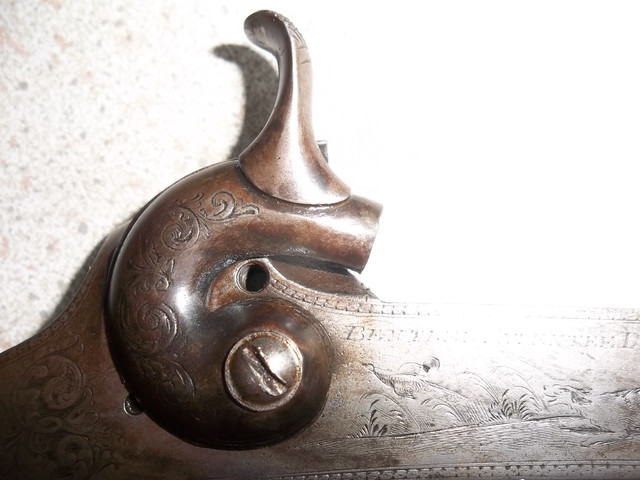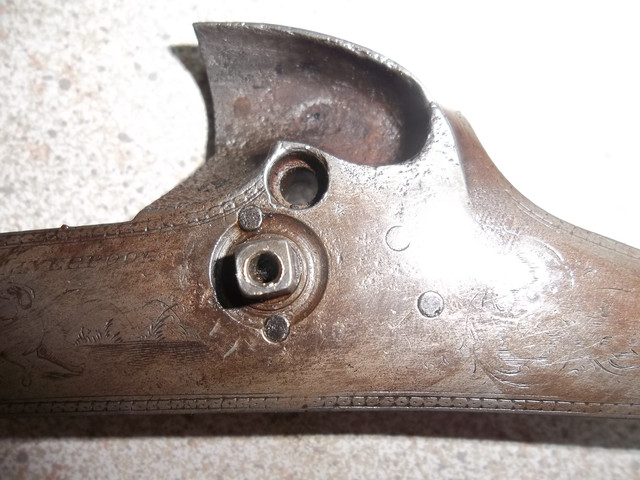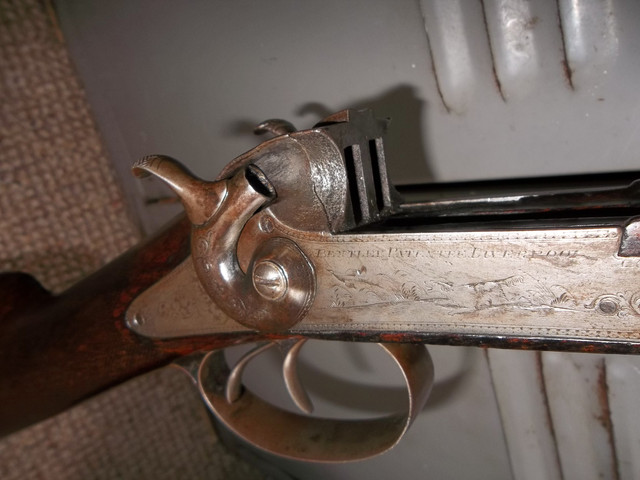Enclosed are images which may interest members of a rare centre fire percussion sxs shotgun .This gun is pre 1840 and patented by Joseph Bentley and known has The Centre Fire Safety Gun. Joseph Bentley had a manufacturing business at 14 St Marys -Row Birmingham , he also had a shop at 12, South Castle -Street Liverpool. Has I said this is a rare patent cased with all accessors I have only seen another one which was also cased, maybe because it is rare is why it never caught on to any extent but it does show the craftmanship of English gun making.
Feltwad
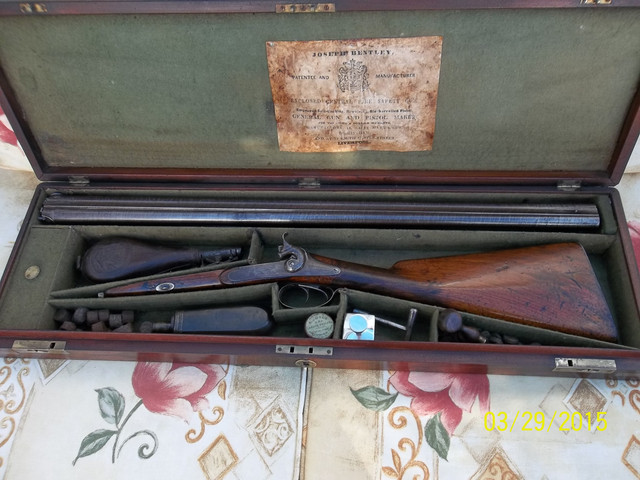

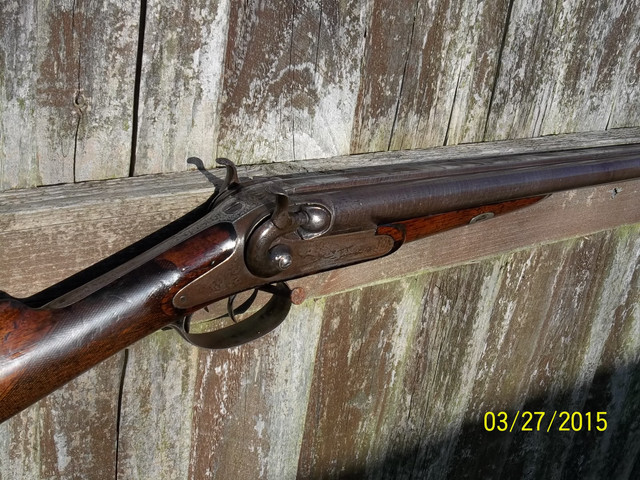
Feltwad








